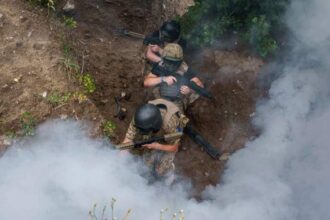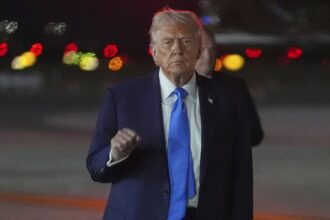In a significant shift from its historically cautious military stance, Germany has embarked on an ambitious initiative to bolster Ukraine’s domestic weapons production capabilities. The landmark agreement, announced yesterday during German Defense Minister Boris Pistorius’s visit to Kyiv, marks a strategic evolution in Berlin’s support for Ukraine as the conflict with Russia approaches its third year.
“This isn’t merely about supplying weapons—it’s about creating sustainable security architecture for Ukraine,” Pistorius declared while standing alongside his Ukrainian counterpart, Rustem Umerov. The German-Ukrainian defense industrial partnership will enable Ukrainian factories to manufacture critical military equipment on their own soil, dramatically reducing dependency on foreign shipments that have faced logistical challenges and political delays.
The agreement focuses particularly on artillery systems, ammunition production, and air defense components—areas where Ukraine’s military has experienced critical shortages during intense Russian offensives. According to defense analysts at the International Institute for Strategic Studies, Ukraine has been consuming artillery shells at nearly three times the rate Western allies can currently supply them, creating dangerous operational gaps on the front lines.
German arms manufacturer Rheinmetall has already commenced construction of a repair facility for military vehicles in western Ukraine, with plans to expand into full-scale production of armored personnel carriers and ammunition by mid-2025. This facility, located safely away from front-line combat zones, represents an investment exceeding €200 million, company officials confirmed.
Ukrainian President Volodymyr Zelensky characterized the agreement as “transformative” for his country’s defensive capabilities. “When Ukraine can produce its own weapons at scale, we strengthen not just our military position, but our diplomatic one as well,” Zelensky stated during a press briefing at Mariinsky Palace. “Peace through strength is not just a slogan—it’s the practical reality of international relations.”
The German initiative arrives at a critical juncture when Ukraine’s military position has deteriorated in eastern regions. Russian forces have seized approximately 3,800 square kilometers of Ukrainian territory since January, exploiting ammunition shortages and troop fatigue among Ukrainian defenders. Military observers note that Russia’s numerical advantages in both personnel and artillery have created unsustainable pressure on Ukrainian defensive positions.
Political analysts from the European Council on Foreign Relations suggest the German-Ukrainian partnership serves multiple strategic objectives beyond the immediate battlefield. “Berlin is signaling long-term commitment to Ukraine’s sovereignty while simultaneously investing in Europe’s eastern security architecture,” explains Dr. Claudia Hofmann, senior fellow at ECFR. “This represents a philosophical shift in German security thinking—from crisis response to crisis prevention.”
The agreement has predictably drawn sharp criticism from Moscow. Russian Foreign Ministry spokesperson Maria Zakharova condemned the deal as “a dangerous escalation that directly contradicts Germany’s historical responsibility to maintain peace in Europe.” The Kremlin has repeatedly warned against Western weapons transfers to Ukraine, though these threats have gradually lost credibility as NATO countries have incrementally increased their military support without triggering wider Russian retaliation.
For ordinary Ukrainians, the weapons production agreement represents a psychological boost after months of difficult news from the front. “Knowing we can make our own defensive weapons gives us hope that we won’t be abandoned if Western political winds change,” said Oleksandr Petrenko, a 52-year-old engineer from Dnipro who now works in a factory being retrofitted for military production.
The financial commitment underlying the agreement remains partially classified, though German officials indicated the initial investment would exceed €500 million, with additional funding tied to production milestones. This approach differs significantly from previous aid packages that focused on immediate weapon transfers rather than industrial capacity building.
As winter approaches with critical energy infrastructure still vulnerable to Russian strikes, the question remains: can Ukraine’s nascent defense industrial capacity develop quickly enough to influence battlefield dynamics before Russia consolidates its territorial gains? The answer may determine not just Ukraine’s defensive capabilities, but its leverage at any future negotiating table.










